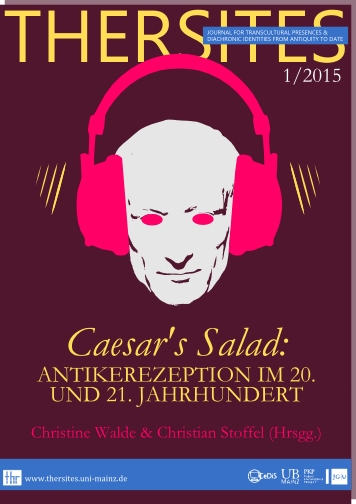Dafni e Cloe nel balletto del XX e XXI secolo
DOI:
https://doi.org/10.34679/thersites.vol1.9Keywords:
Longus, Daphni et Chloé, History of Classical Ballet, Maurice Ravel, Mikhail Fokine, Terence Kohler, Benjamin MillepiedAbstract
Italiano
Il presente contributo ha come oggetto il fenomeno della ricezione del romanzo di Longo nel balletto classico del XX e XXI secolo. Grazie alla radicata presenza nell’opera greca della musica e della danza, che accompagnano armoniosamente le vicende dei protagonisti, la storia di Dafni e Cloe si è prestata sin dai primi anni del Novecento a ben 32 trasposizioni coreografiche, la prima della quali fu il celebre Daphni et Chloé creato nel 1912 dal coreografo russo Mikhail Fokine su musica di Maurice Ravel per i Ballets Russes di Sergej Diaghilev. L’analisi si focalizza sulle recentissime versioni di Terence Kohler per il Bayerisches Staatsballett di Monaco di Baviera (2010) e di Benjamin Millepied per il corpo di ballo dell’Opèra di Parigi (2014).
English
The paper focuses on the reception of Longus’s romance Daphni et Chloé in the classical ballet of 20th and 21st century. Thanks to a very strong presence in the novel of music and dance, Longus’s work has been adapted into ballets since the early 20th century. The paper analyzes the famous Daphni et Chloé created in 1912 by the Russian choreographer Mikhail Fokine on the music of Maurice Ravel for Sergej Diaghilev’s Ballet Russes and the two very new versions of Terence Kohler for the Bavarian State Ballet (2010) and Benjamin Millepied for the Paris Opera Ballet (2014).
Downloads
Issue
Section
License
Copyright (c) 2015 Lisa Sannicandro

This work is licensed under a Creative Commons Attribution-NonCommercial 4.0 International License.
Authors who publish with thersites agree to the following terms:
- Publishing in thersites is free of any charges.
- Authors retain copyright and grant the journal right of first publication.
- Users are allowed to read, download, copy, distribute, print, search, or link to the full texts of the articles, or use them for any other lawful purpose, without asking prior permission from the publisher or the author, so long as the original work is properly cited and is not used for commercial purposes. The journal is published under the Creative Commons Attribution 4.0 International License. More information about this license is available at https://creativecommons.org/licenses/by/4.0/.
- Authors are able to enter into separate, additional contractual arrangements for the non-exclusive distribution of the journal's published version of the work (e.g., post it to an institutional repository or publish it in a book), with an acknowledgement of its initial publication in this journal.
- Authors are permitted and encouraged to post their work online (e.g., in institutional repositories or on their website) as it can lead to productive exchanges, as well as earlier and greater citation of published work (See The Effect of Open Access).


